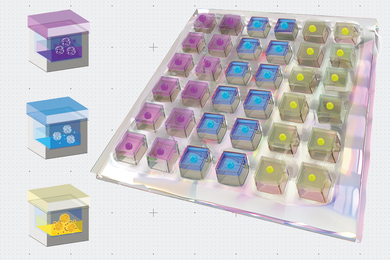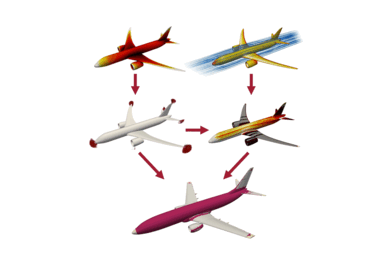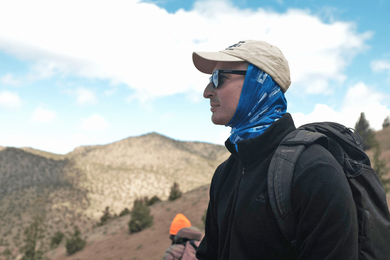Twenty-six miles in the Boston Marathon is a long way to go in the name of science.
But a trio from the Media Lab went the distance last week, carrying a cluster of microelectronic monitoring devices that they had developed to measure their vital signs and transmit data to be uploaded to the Internet as they ran (MIT Tech Talk, April 16).
The Media Lab's "live wires" were Associate Professor Michael Hawley, the Alex Dreyfoos Jr. Career Development Professor of Media Arts and Sciences, and two of his students, Bradley Geilfuss, a graduate student in architecture, and UROP student Craig Wisneski, a senior in brain and cognitive science. They all finished the course in just under five hours.
"The day after a marathon is painful. Going down stairs is an ordeal. Three days later I was still walking like I'd just got off a horse. But a week later, I'm fine," Professor Hawley said.
Four small devices acted as "personal flight recorders" during the race. One, a vitamin-size capsule containing a sealed battery and radio transmitter to transmit data on body temperature, had to be swallowed before the race. The trio also wore accelerometers in their shoelaces to count their footsteps, heart rate monitors on thin straps around their chests, and GPS (Global Positioning System) sensor in fanny packs.
Professor Hawley reported some "funny ironies" about the monitoring devices.
"A lot of technology goes right out the window when it comes time to perform. Craig's gear provided a working telnet link--folks at mission control could `telnet' right to his butt--but for some strange reason, the data gathering did not work. Brad's system and mine recorded all the data just fine--that was our primary goal--but our live data link didn't work. Also, our backup uploading plan--meet a pit crew every few miles so they could upload the bits--didn't work. It was too hard for them to access the course."
The team was "pleasantly surprised that the data logging did work," Professor Hawley said. "There were a few loose wires--Brad's heart rate monitor came loose and my pedometer broke--not odd considering the pounding our prototypes took. Swallowing the pills was not a problem, but the radio receivers were flaky. The GPS position logger worked fine, and the StarTAC phones were a blast. Several folks phoned the runners during the race. I was interviewed live by half a dozen sources."
Finally, though, the loftier goals of science took a back seat to just finishing the race. Both students dropped their gear "around mile 20," said Professor Hawley, who carried his to the end.
"The lovely thing about a marathon is that you don't need any gear to run it. You don't even need shoes; Abebe Bikila won it barefoot in Rome in 1960," he said.
Besides, "the joy of running the race is what you remember--the cold water, sweet oranges, the crowd cheering you on for 26 miles, rounding the corner for the finish line," said Professor Hawley.
Would he run the marathon again? "Maybe. A nice long bike ride might be easier on the joints."
A version of this article appeared in MIT Tech Talk on April 30, 1997.





